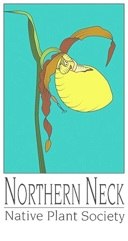Plant of the Month September 2019: Blackhaw
Viburnums are beautiful native shrubs or small trees with 11 species native to Virginia and four native to the Northern Neck. All are wonderful but the native Blackhaw (Viburnum prunifolium) stands out on all counts, with its multi-season landscape interest from showy flowers to conspicuous fall fruit. Native Americans and early colonists used Blackhaw Viburnum medicinally and records of colonists growing it as an ornamental date to 1727.
Blackhaw is the host plant for both the spring and summer azure butterflies. In May, its creamy white, 4-5” wide, flat-topped flower clusters attract many pollinators. These are followed by abundant fall fruit in showy clumps that turn from yellow, to soft rose, and finally to dark blue-black in October. Blackhaw fruit often persists months, creating a long-lasting buffet relished by numerous songbirds and small mammals like squirrels and chipmunks. The fruit is highlighted against the fall foliage as it turns from bronze to rosy red or brilliant red-purple.
This large, deciduous, multi-stemmed shrub can grow 12 – 15’ high and 6 to 9’ wide and sometimes can form colonies but it can also be trained as a handsome small, single-trunk specimen tree. The brown bark on older trunks is handsome and broken into showy blocks, much like our native dogwood. Like other Viburnums, its small leathery leaves are held opposite each other along stiff stems. Similar to cherries, they are very finely toothed along the margins, giving rise to the specific name prunifolium, meaning “like cherry leaves.”
Widely tolerant of soils and exposure, Blackhaw thrives in both sun and part shade, and in very moist to dry soils. In the wild, it is found in a range of habitats, but often along river and stream edges and in moist woods and thickets in our area. Blackhaw is also tolerant of Black Walnuts, which release a chemical that inhibits the growth of many plants and is fairly deer resistant.
Blackhaw, with its multi-season interest and easy use in shrub borders, hedges or as a specimen plant is a wonderful garden asset. Aside from ornamental and medicinal uses, early colonists used the fruit in jams and preserves, although it is often eaten right off the tree (best after a frost).
